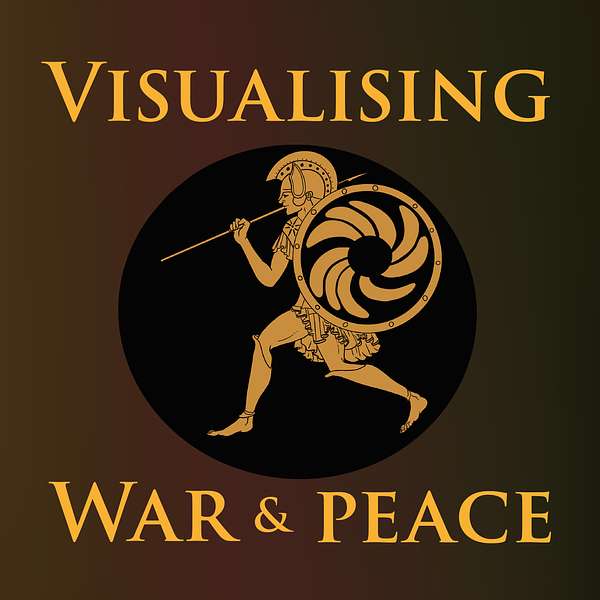
Visualising War and Peace
How do war stories work? And what do they do to us? Join University of St Andrews historian Alice König and colleagues as they explore how war and peace get presented in art, text, film and music. With the help of expert guests, they unpick conflict stories from all sorts of different periods and places. And they ask how the tales we tell and the pictures we paint of peace and war influence us as individuals and shape the societies we live in.
Visualising War and Peace
Warfare in the Digital Age with Donatella Della Ratta
‘The non-violent Syrian uprising that turned into an armed conflict was born digital and networked from the very moment an unarmed activist used a smartphone camera to shoot while an armed man raised his gun to shoot at him.’ Donatella della Ratta, Shooting a Revolution: Visual Media and Warfare in Syria (2018).
In this week's episode, Alice and Nicolas interview Dr Donatella della Ratta, Associate Professor of Communications and Media Studies at John Cabot University in Rome. Donatella specialises in Arabic-speaking media. She lived in Damascus from 2007 to 2011, so Syrian media became a particular area of focus for her – and particularly the use made of iphones, youtube and online media to document what was happening as civil protests turned to civil war from 2011 onwards. She has professional experience as a journalist and TV producer, and managed the Arabic speaking community of the international NGO Creative Commons from 2008-2013. Alongside her expertise in media, Donatella is interested in storytelling across different art forms. She has curated several art exhibitions and film programmes on Syria, and she co-founded ‘Syria Untold’, an online platform for independent writers to share stories about peace and war in Syria which might otherwise be unheard.
In the podcast, we talk about the impact which the so-called 'digital revolution' has had on how people experience, communicate, visualise and even conduct war. Donatella discusses the rise of citizen journalism and hand-held film-making as new ways to document and communicate conflicts as they unfold; but we also reflect on more sinister developments such as the use of social media to spread misinformation and generate violence. As Donatella puts it in her book Shooting a Revolution, 'Syria is the first fully developed networked battleground in which the technological infrastructure supporting practices of uploading, sharing and remixing, together with the human network of individuals engaged in those practices, have become dramatically implicated in the production and reproduction of violence.' We discuss the increased visibility of modern conflict, but also the role played by social media organisations in preserving, censoring and deleting content - which can limit our collective memory of individual conflicts and our wider habits of visualising war. Ending on a more upbeat note, we talk about the ways in which campaigners and activists can harness blogs and other forms of digital media to broaden public understanding of conflict and its impacts.
Among other questions, we asked Donatella:
- compared with traditional media, what impact can digital media have on how conflicts are reported, represented and understood?
- when peaceful protests turned violent in Syria, what use did people make of digital media and why?
- in what ways can digital media drive (and not just document) conflict?
- what role might social media providers play in shaping current and future habits of visualising war?
- how did the rise of citizen journalism in Syria turn into a thriving new film industry?
- how can the publication of blogs via online platforms like Syria Untold broaden our habits of visualising war?
We hope you enjoy the episode! For a version of our podcast with close captions, please use this link. For more information about individuals and their projects, please have a look on the University of St Andrews Visualising War website.
Music composed by Jonathan Young
Sound mixing by Zofia Guertin